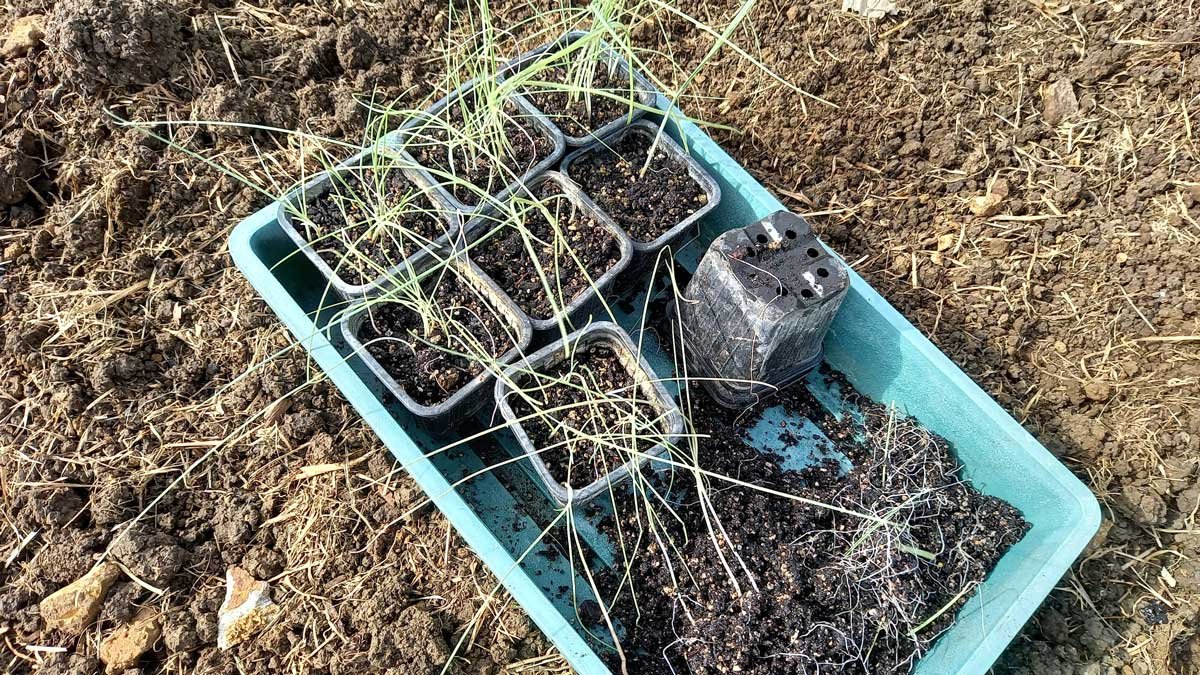It’s starting to feel like autumn is arriving. The days are noticeably shorter. The temperature is more bearable.
There’s a few tasks I’ve been willfully ignoring in the garden, and this week I swore I’d do them. They’re all part of a regular rhythm in the garden and I’ve written about most of the tasks before. It’s the time of harvest, and planting the winter veges.
Sometimes it just takes a few hours hard work at the right moment to ensure a decent harvest in months to come. I’ve found thinking about it as an investment improves my motivation for actually doing the work. Invest the time and energy now, reap the benefits on your dinner plate for months to come.
Basil harvest
Last year I left the basil harvest too late and lost the majority of what I’d managed to grow. This year I planted about three times as much all over the garden. I thought they were looking about as good as they’re going to get, so I gave them all a good haircut.

Basil doesn’t dry very well. But it is good frozen. It loses colour and goes dark, but it keeps its flavour.
I left enough on each plant so that hopefully I can continue to have fresh basil (and maybe if I’m lucky, a second harvest) up to May, but the rest came inside to be washed and processed for freezing.
I kept the leaves, fleshy stalks, and tips of flower buds. The older stems don’t blend very well for me, so they went into the worm farm with the browning and yellowing leaves, and the (now squashed) pupating caterpillars. Then I washed and dried what I was keeping.
Once clean, I stuffed the blender with basil, add some olive oil and salt, then blended it into a paste.
I aim for the mixture to be thicker than pesto. The oil never completely freezes, so to get a good frozen product, I want more basil than oil. Then I fill ice cube trays with the mixture and freeze it. Once frozen, it can be popped out of the ice cube trays and stored in a zip-lock bag in the freezer.

You can just freeze whole leaves too, but I prefer to just grab a free-flow cube and add it to my winter slow cooked stews and pastas. It’s more processing up-front, but so easy and flexible to use. We’ve got significantly more tucked away going into this winter than we did last year, so that’s a win.
Planting broccoli
Time for the brassicas to go in! We love broccoli and it’s a staple each year in our garden. I picked up some seedlings from a local independent roadside seller last week.
The white butterfly usually float around for another couple of months, so I’ve sprayed the seedlings with Bt (Bacillus thuringiensis) to kill any caterpillars, and also placed them under protective bug netting. If I can keep the caterpillars off long enough, they should produce nicely in a few months.

Getting them settled in right is the trick, I reckon. They should have at least another 6 weeks of good growing weather before it begins getting colder. We should be eating them in June or July, I’ll plant some more in about 4 weeks to take us through to spring.
Planting leeks
I reckon great leeks are about timing. This year I managed to sow my leeks on time in November. I sowed an entire packet of seed as our neighbour is also a big fan. I gave her half the seedlings and she got them into her garden on time six weeks ago, but ours were delayed.

It’s not just distraction and laziness (though it is absolutely some distraction and laziness). Our Agrias were due out in early February, but their harvest was delayed by a massive (100mm+) downpour. We had to wait for the soil to dry back out before we could harvest the potatoes, and make space for the leeks.
But this week I really did plant a LOT of leeks. I’m not sure how many, maybe 50? At least if they don’t get fat, we’ll have the numbers to make up for it. I’ll make a point to drop some off to the local pātaka kai regularly throughout winter and spring if they do well.
Harvesting spaghetti squash
It turns out I really like spaghetti squash. Not in a ‘replace my carbs with a vegetable’ kind of way, but as a side-dish, they’re pretty yummy.
I found some in my seed collection last spring and decided to grow them instead of pumpkin this year. We did pretty well. I’m happy!

Still to do
It’s not all productivity all the time, but a little bit regularly enough can keep us going quite well. As long as I remember the plants won’t grow if I never plant them. And that it’s impossible to eat what we’ve grown if it hasn’t been harvested.
But my policy of being a lazy gardener pays off too. Letting things go to seed and then shaking the seed heads around beds is a valid part of my method. Lettuce is now popping up around the garden wherever it has decided to grow. I’m never short of dill or lemon balm The parsley and coriander should be along soon too.
It provides for us and I try not to manage it too heavily, but a little burst of effort at the right time pays dividends.


